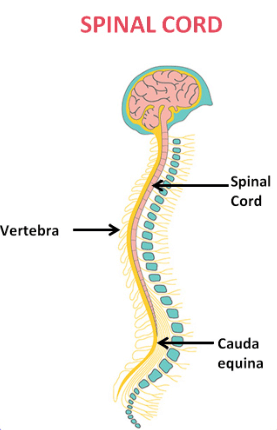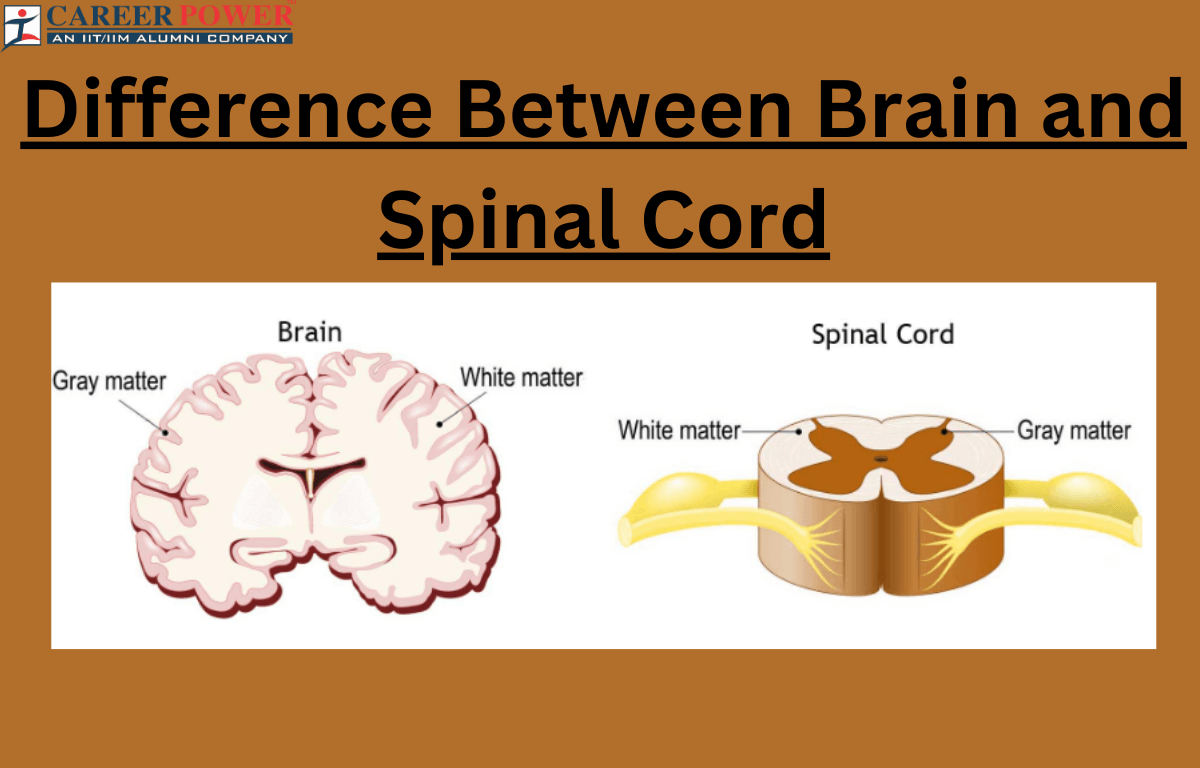The brain and spinal cord are integral components of the central nervous system (CNC), responsible for processing information and coordinating activities throughout the body. Together, the brain and spinal cord form the central nervous system, coordinating sensory input, motor responses, and higher cognitive functions. They play a crucial role in regulating bodily functions, enabling movement, processing sensory information, and maintaining overall homeostasis. We have discussed a few more differences between the brain and the spinal cord.
Brain and Spinal Cord
The brain and spinal cord are both parts of the central nervous system. The brain, located in the head, interprets information and coordinates body functions. The spinal cord, extending from the base of the brain down the back, transmits signals between the brain and the rest of the body, also playing a role in reflex actions. While the brain is involved in higher cognitive functions, the spinal cord primarily handles more automatic, involuntary responses.
Define Brain
The Brain is like a supercomputer inside your head, controlling everything you do, feel, and think. It’s the command center for your body, responsible for processing information, making decisions, and coordinating all bodily functions. Made up of billions of tiny cells called neurons, the brain communicates through electrical signals to ensure everything runs smoothly. Different parts of the brain have specific jobs – some handle your emotions, others control movement, and some help you remember things. Think of it as the CEO of your body, managing tasks from the simplest actions like blinking to complex processes like solving problems. Your unique thoughts, memories, and personality all reside in this incredible organ.

Define Spinal Cord
The spinal cord is like a communication highway between your brain and the rest of your body. It’s a long, thin bundle of nerves that runs down your back, inside the protective backbone or spine. Think of it as a messenger – it carries signals back and forth, allowing your brain to send commands for movement and receive information about sensations like touch and pain. The spinal cord is crucial for reflexes too; these quick, automatic responses help protect you from harm. It’s like the information superhighway ensuring that your brain and body stay connected, working together seamlessly to keep you moving, feeling, and reacting to the world around you.

Difference Between Brain and Spinal Cord
The brain and spinal cord are indispensable for overall human function, controlling both basic physiological processes and complex cognitive activities that contribute to individual survival, adaptation, and quality of life. Here we have discussed some of the features of the brain and spinal cord such as their locations, function, structure, and size, that highlight the differences between them.
| Difference Between Brain and Spinal Cord | ||
| Features | Brain | Spinal Cord |
| Location | The brain is found in the cranial cavity within the skull. | The spinal cord extends from the base of the brain down the vertebral column. |
| Function | The brain is responsible for processing information, cognitive functions, and voluntary actions. | The spinal cord is primarily involved in transmitting signals between the brain and the body. |
| Structure | The brain is composed of different regions such as the cerebrum, cerebellum, and brainstem. | The spinal cord is a cylindrical bundle of nerve fibers with segments corresponding to the vertebral column. |
| Protection | The brain is protected by the skull and layers of meninges. | The spinal cord is protected by the vertebral column and meninges. |
| Grey and White Matter | The brain contains both grey and white matter throughout its structure. | The spinal cord contains grey matter which is centrally located, while white matter surrounds it. |
| Cognition | The brain is the center for consciousness, thoughts, memory, and higher cognitive functions. | The spinal cord lacks the cognitive functions of the brain. |
| Blood-Brain Barrier | The brain has a well-developed blood-brain barrier, restricting the passage of certain substances from the blood. | The blood-spinal cord barrier exists but is not as robust as the blood-brain barrier. |
| Voluntary vs. Involuntary Control | The brain controls voluntary actions and conscious activities. | The spinal cord is involved in reflex actions and involuntary responses. |
| Size | The brain is larger and more complex. | The spinal cord is smaller and simpler in comparison. |
| Peripheral Nervous System Connection | The brain is connected to the peripheral nervous system through cranial nerves. | The spinal cord is connected to the peripheral nervous system through spinal nerves. |
Importance of Brain and Spinal Cord
The brain and spinal cord are crucial components of the central nervous system, playing vital roles in human physiology and functioning. Here we have discussed a few points that highlights the importance of both the brain and spinal cord.
- Control of the Body: The brain is the command center for the entire body, regulating and coordinating various physiological processes. It interprets sensory information and sends signals to muscles and organs to execute appropriate responses. The spinal cord acts as a communication highway, transmitting these signals between the brain and the rest of the body.
- Cognitive Functions: The brain is responsible for cognitive functions such as thinking, memory, learning, and decision-making. It enables complex mental processes, allowing individuals to perceive, understand, and interact with their environment.
- Movement and Coordination: Both the brain and spinal cord work together to control voluntary and involuntary movements. The brain initiates voluntary movements, while the spinal cord coordinates reflex actions, providing rapid responses to stimuli without direct involvement of the brain.
- Reflex Actions: The spinal cord plays a crucial role in reflex actions, allowing the body to respond quickly to potentially harmful stimuli. Reflex arcs mediated by the spinal cord enable rapid, automatic reactions, enhancing the body’s ability to protect itself.
- Sensory Processing: The brain processes information received from the senses, allowing individuals to perceive and interpret their surroundings. This sensory processing is essential for awareness, learning, and adaptation of the environment.



 50 Vegetables Name for Kids in English a...
50 Vegetables Name for Kids in English a...
 Food Chain: Definition, Types, Examples,...
Food Chain: Definition, Types, Examples,...
 Human Respiratory System: Definition, Di...
Human Respiratory System: Definition, Di...













